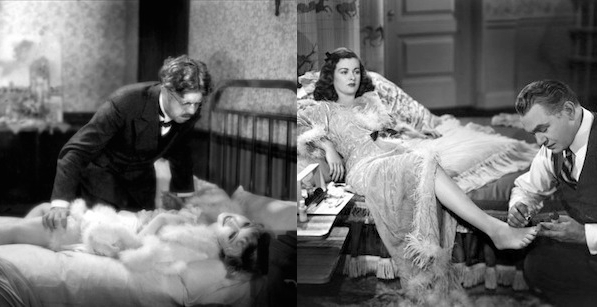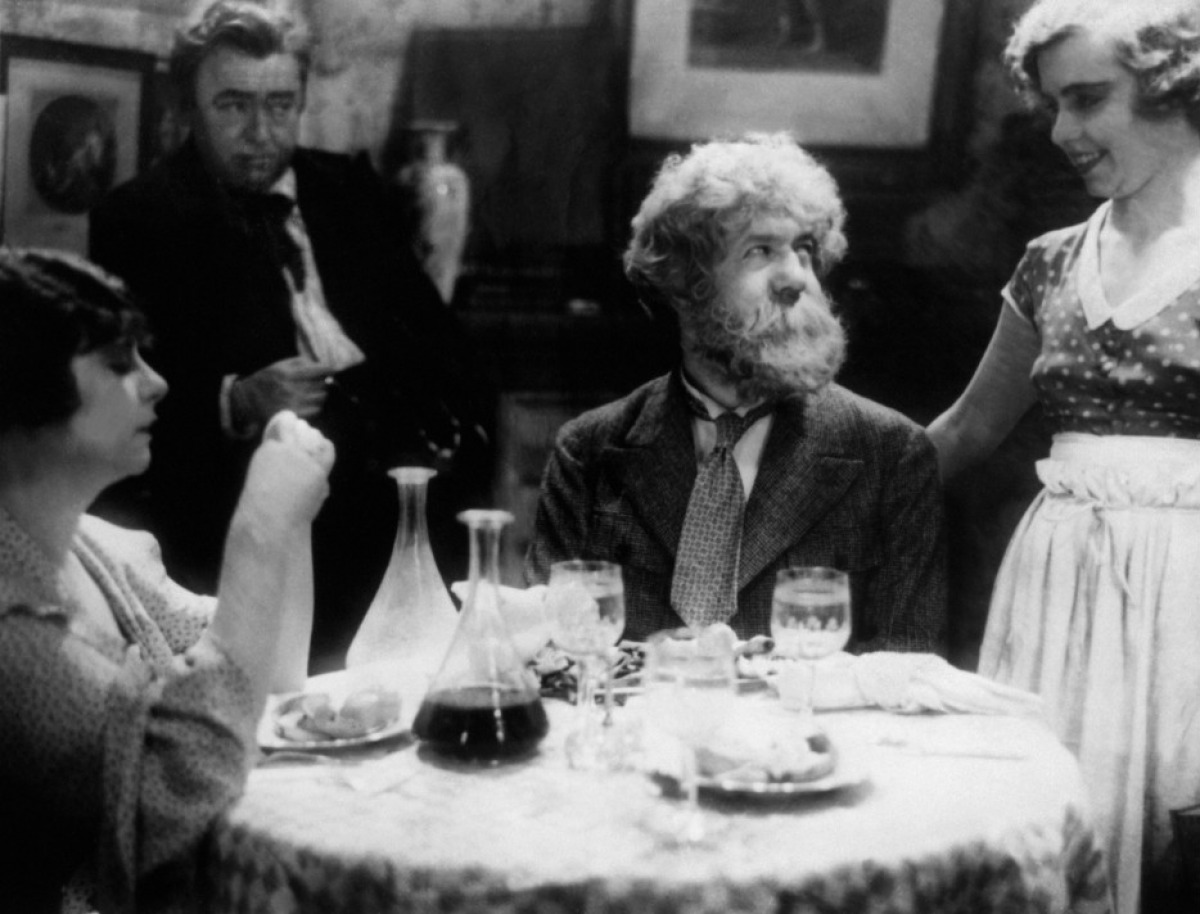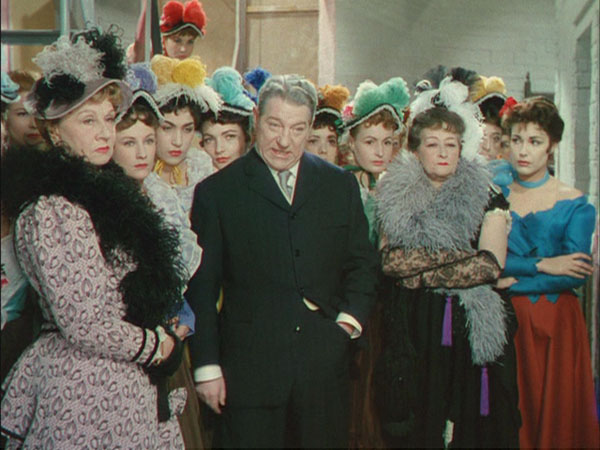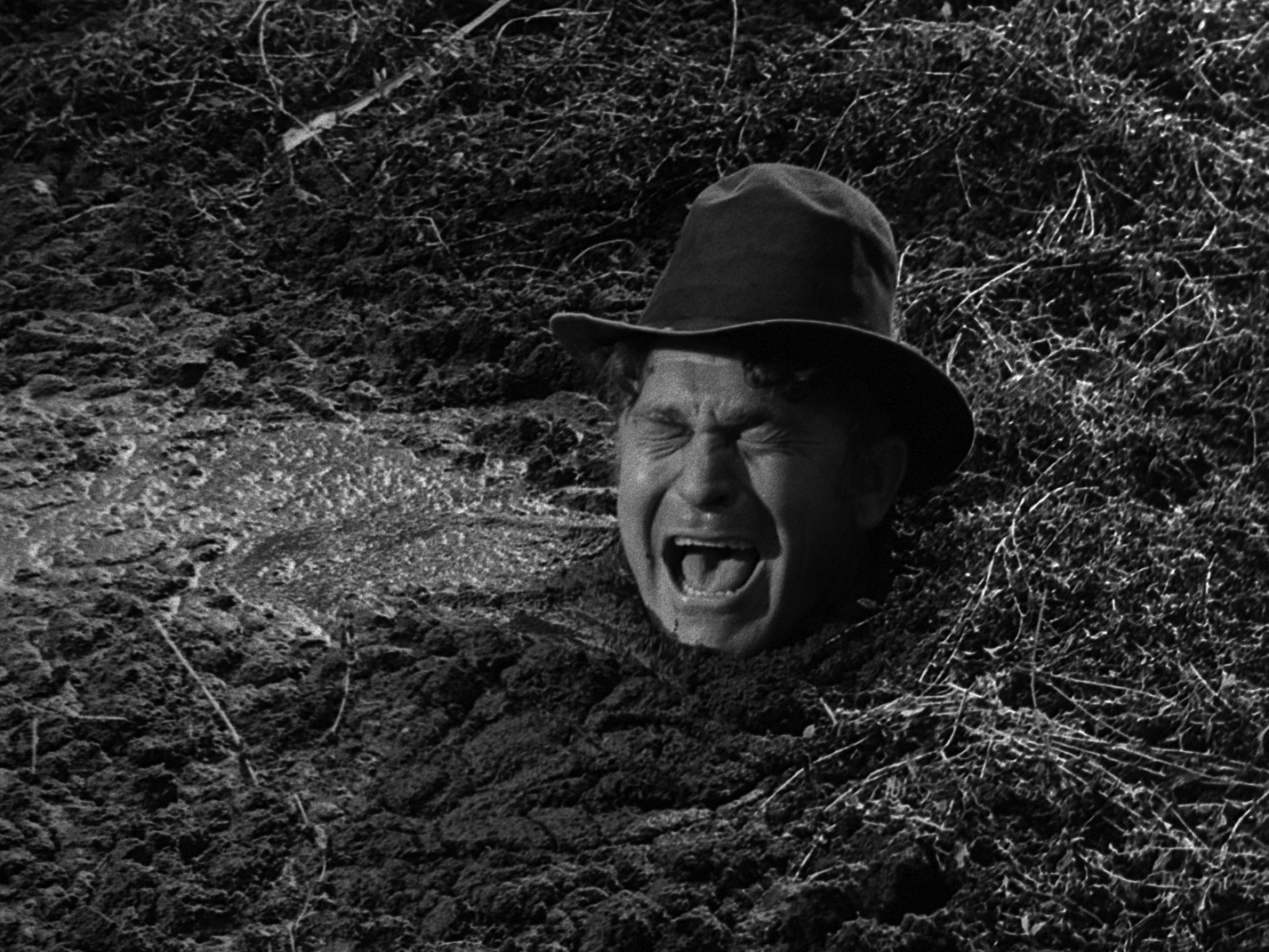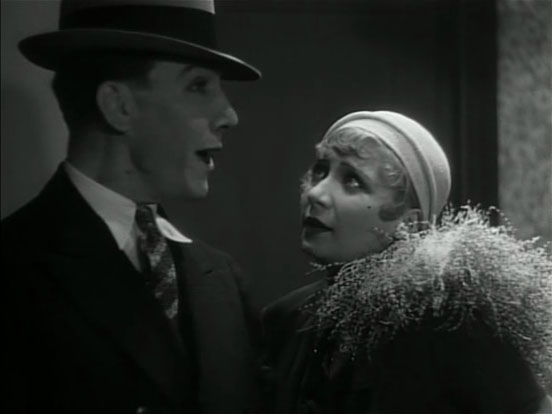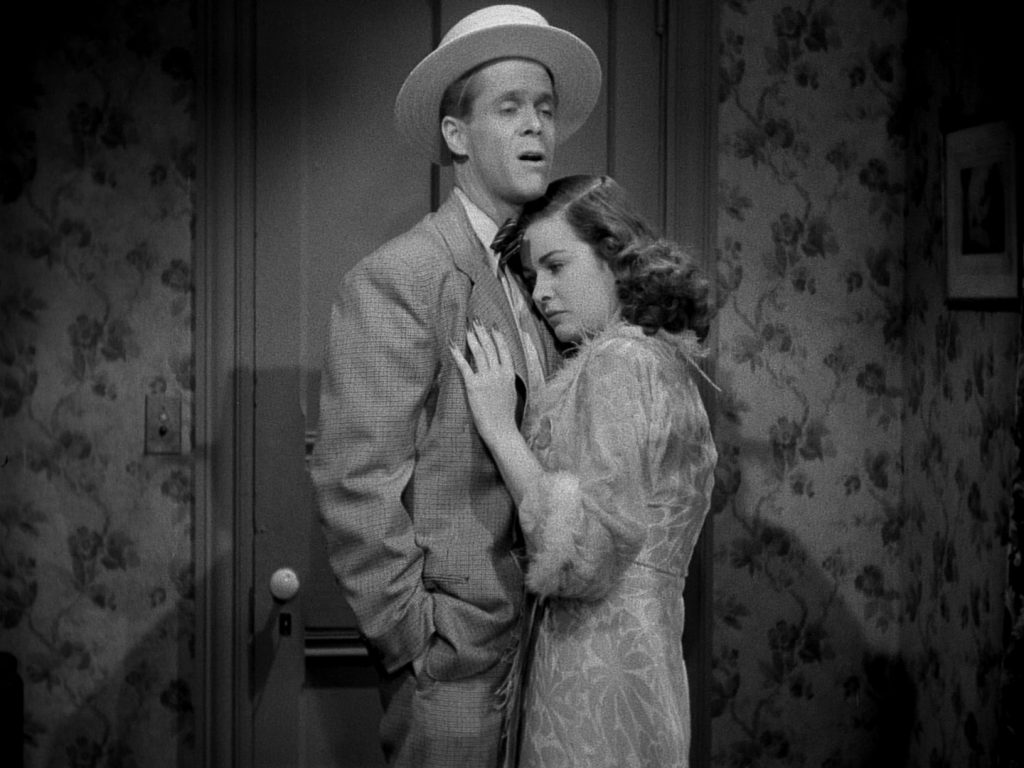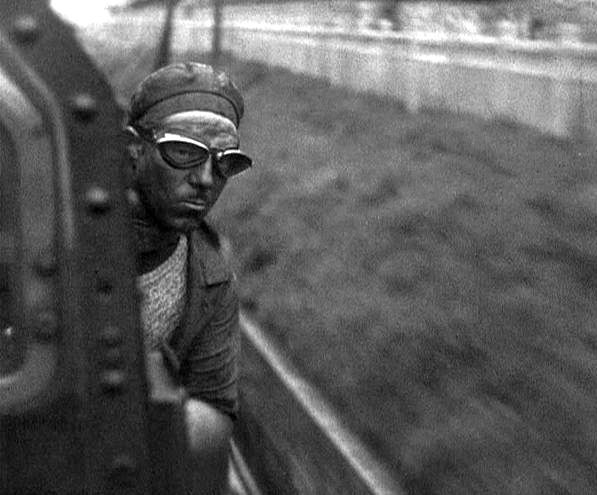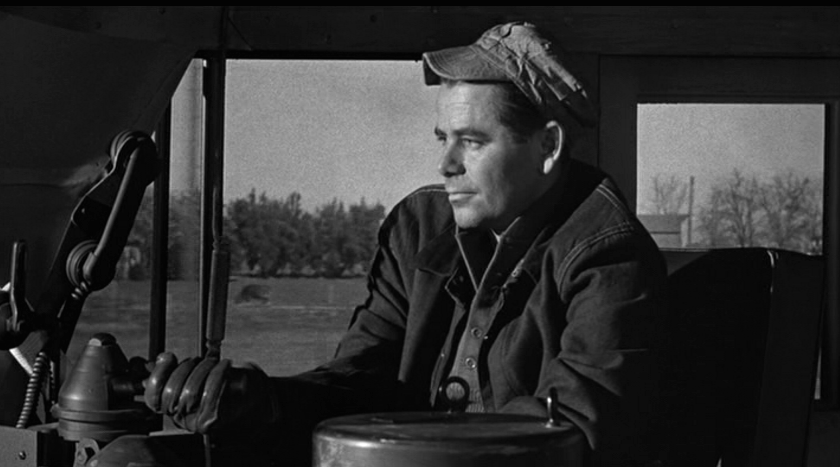What different worlds are conjured up when the names Jean Renoir and Fritz Lang are mentioned! On the surface, their films and personalities seemed to have nothing in common. As a director, Renoir was in the French realist tradition, optimistic and humanistic. Lang, on the other hand, was one of the leading lights of the German Expressionistic movement, pessimistic and cynical. Weltschmerz permeated his film noir. Lang, the creator of the evil Dr. Mabuse, looked upon the world with grim detachment and a strong moral sense. There are no real villains in Renoir’s oeuvre, where “everyone has his reasons.” The difference is typified by Lang’s M (1931) and Renoir’s Boudu Saved from Drowning (1932), whose protagonists are Peter Lorre’s frightening and pathetic child killer and Michel Simon’s lovable anarchic tramp.
The portly, hedonistic Renoir was universally loved by his crew and cast, while the severe monocle-wearing Lang was feared and often disliked. Marlene Dietrich wrote: “In order to be able to work with Lang [on Rancho Notorious], I had to repress all the hatred and aversion he aroused in me.”
When Renoir cast Jean Gabin in French Can Can (1955), the actor had gained a reputation of being a rather disagreeable character, always grumbling and difficult to please. But on set, Gabin was seen to be submissive to the director’s every suggestion. “I love Gabin, and he loves me,” wrote Renoir. Yet, paradoxically, the two directors’ lives and work had many parallels, frequently criss-crossing.
Jean Renoir (1894–1979) and Fritz Lang (1890-1976) were almost exact contemporaries. In the springtime of 1933, a few months after Hitler had come to power, Renoir was in Berlin busily meeting German film producers and distributors to get financial backing for his next film, Madame Bovary. In the same year, Lang, whose The Testament of Dr Mabuse was promptly banned, was summoned to the office of Dr. Goebbels who, to the film director’s astonishment, offered him a chance to direct Nazi productions. Lang took a train to France the same evening, leaving behind his possessions, bank savings, and his wife and co-screenwriter, Thea Von Harbou, who had joined the Nazi Party.
In 1940, at his house in Cagnes, near Nice, Renoir received a visit from two Frenchmen representing Nazi cultural institutions in Vichy, who attempted to persuade him to make films for the New France. A few months later, he and his wife took a ship bound for the USA.
The fellow exiles, Renoir and Lang, became friends in California, both having left Europe because of the rise of Hitler, only to have to struggle against dictatorial producers in Hollywood. MGM tacked on a happy ending to Lang’s Fury (1936) and Warner Bros. did the same to his Cloak and Dagger (1946). Renoir suffered from the very beginning with his first Hollywood film Swamp Water (1941). When he was first introduced to some executives at Fox, Renoir said, in a slip of the tongue, that he was delighted to be working for “Fifteenth Century Fox,” a remark that was truer than he knew.
He was soon to confront the terrible reality of the medieval autocracy of the front office personnel over the creative team. “One has the impression of working in a shoe factory than in cinema,” he declared. “The work I’m doing here presents no artistic interest at all. Hollywood is an immense machine, an admirable mechanism without a soul.”
Naturally, Renoir and Lang, who were in their forties when they arrived in Hollywood, having directed several masterpieces of world cinema, objected to being treated as novices who needed to be taught the “American way” of making films.
Lang, who had successfully made The Return of Frank James (1940) for Fox, had originally been assigned to Swamp Water, but when Renoir showed an interest in the script, studio head Darryl F. Zanuck immediately switched it to Renoir and the German émigré director went on to make a second Western against his will.
In 1945, Lang, remade Renoir’s La Chienne (1931) as Scarlet Street, shot at Universal Studios, starring Edward G. Robinson and Joan Bennett, a key film noir of the period. La Chienne (always advertised by its original title in the USA and the UK because The Bitch was deemed unfit), is an amoral melodrama about the Pimp, the Tart and the Client, which Renoir transformed into a work of unsentimental naturalism, creating characters rather than types and shot in actual locations.
The critic Robin Wood pointed out some of the differences between the two directors’ approach to the same subject. “A Renoir shot has about it an air of improvisation, of inventing bits of business, of drawing spontaneously on the particular gifts and attributes of the players; a Lang shot functions strictly in relation to the one that follows it… Renoir’s camera is habitually at the service of the actors, Lang’s at the service of the precise and rigorous expression of an idea.”
The only available comment on Scarlet Street from Renoir came years later when he remarked to American director Tay Garnett, “It’s a pity they had to remake La Chienne in Hollywood, and so badly,” one of the very few negative remarks Renoir ever made about a colleague, let alone Lang who was a friend. But, in the late 1960s, when Peter Bogdanovich was complaining to Renoir about how uncooperative Lang had been for his book Fritz Lang in America, Renoir said quietly, “Peter, you must remember that this is the man who created the German film industry.”
There was a further interweaving of the careers of Renoir and Lang when the latter remade La Bête Humaine (1938) as Human Desire (1954). In many ways, the Renoir film prefigures Lang’s Hollywood film noir movies, both in style and content. Of his version of the Zola story of a crime passionnel, Lang commented, “Naturally in an American movie, you can’t make a hero a sex killer. Jerry Wald [Columbia boss] was very impressed by the Renoir film, in which there are a lot of trains going into tunnels, which Jerry though was a sex symbol. I doubt Renoir in 1938 ever thought about sex symbols….”
Renoir did. Much of the sexual symbolism and imagery of the novel, although toned down, remained in the film, the pulsing locomotives included. Unlike Gabin, as the “human beast,” Glenn Ford is an average guy, not alcohol fueled. Despite the differences, both films are fatalistic, passionate and suspenseful.
In 1943, both directors contributed to the anti-Nazi genre with Renoir’s This Land Is Mine, and Lang’s Hangmen Also Die. Renoir’s last Hollywood movie, The Woman on the Beach (1947), was his most Langian film, not only because it starred Joan Bennett, who had already made three films with Lang. After it had been manhandled by RKO, Renoir abandoned Hollywood, though he continued to live in Beverly Hills. His independent, international career began with The River (1951), shot on location in India, which opened the way for other European directors to make films there. (A few years later, Lang visited India to make Taj Mahal, though the project was abandoned.)
Lang, who remained in Hollywood until 1956, later gave his reasons for leaving. “I was disgusted. I looked back over the past—how many pictures had been mutilated—and since I had no intension of dying of a heart attack, I said ‘I think I’ll step out of this rat race.’ And I decided not to make pictures there any more.” Words that Renoir could have uttered, word for word.

